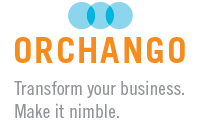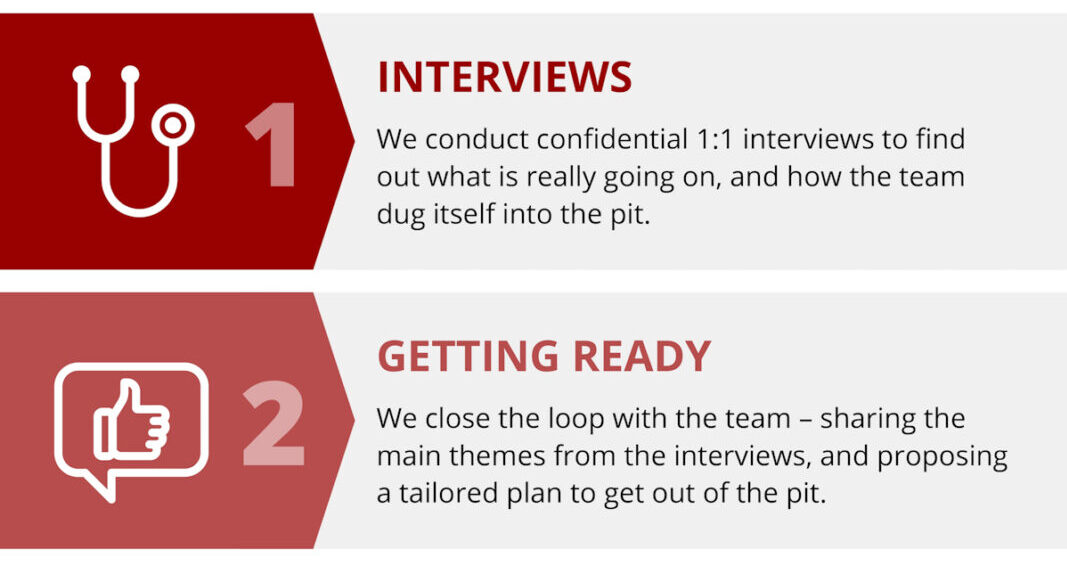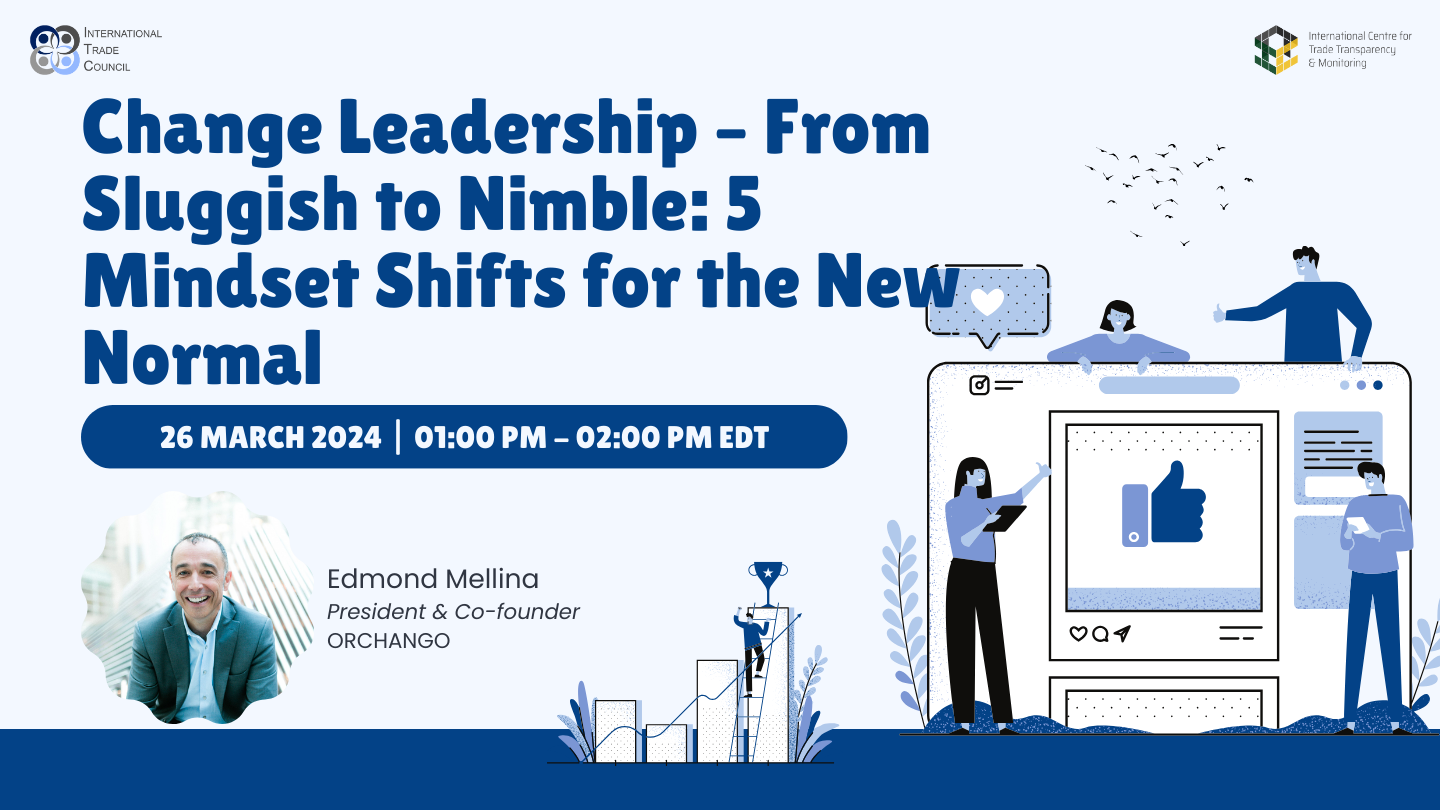How do you transform the dynamics of a team (leadership or otherwise) from dysfunctional to…
New blog series: building change management capabilities

With this blog post, we are launching a series of articles about what it takes to build an organization’s change management capabilities.
This first article provides an overview of the 4-stage model we have developed at ORCHANGO to help our clients thread change management into their organizational and leadership cultures. We will illustrate the model with an analogy: an airliner taking off. You will find a short video clip about it near the end of the post.
In the upcoming articles, we will discuss in more details each stage of the model by answering two questions:
- How does an organization look like during a given stage? (We will address this question from three vantage points: culture/mindset; strategic planning; and execution).
- What are the key things an organization should do in order to move to the next stage?
Drawing on client stories, we will continue the series of blog posts by illustrating how organizations build their change management capabilities in the real world.
Engage and help us shape this series!
We encourage you to use the “comment section” at the bottom of each blog post to comment, challenge us or ask questions. We will react to your comments; answer your questions; and evolve this series of articles based on what you are telling us!
Genesis of our 4-stage model
During the early years of our firm, we were primarily a consulting business whose focus was to help client organizations execute complex and challenging initiatives.
However, we had always been passionate about developing others. And we strongly believed that internal leaders and project teams had to take ownership of change management in order to succeed with strategy execution. In other words, our philosophy was that change management couldn’t be delegated to consultants!
As a result, our consulting engagements always included a knowledge-transfer component. While guiding client organizations through change execution, we provided their internal leaders and project teams with various opportunities to learn key elements of the ORCHANGO Change Management System™. Our clients were learning by doing.
The outcome of these consulting projects was two-fold: successful change execution; and better change management capabilities.
Over time, we put a stronger emphasis on the learning side of our business – with a focus on helping client organizations build their change management capabilities while executing strategic change (today, this service represents our core business).
Hence, we needed to formalize and document the way we went about it!
Capability Maturity Model is the wrong approach
Our first step was to assess the feasibility of adapting the classic – yet often criticized – Capability Maturity Model (CMM).
The US Department of Defense funded the original development of the CMM. Starting in 1986, Watts Humphrey of the Software Engineering Institute (SEI) led the process. The model’s original purpose was to help the US government evaluate the capability of software contractors as part of awarding contracts.
Since then, the CMM has been touted by some as “THE” model to help build various organizational capabilities – including software development, service management… and change management.
However, we concluded that using a CMM-like framework for change management capabilities would be the wrong approach. We will detail our thinking in a future blog post, but for now you will find below our key rationales:
- The CMM is too prescriptive to work for change management.
- The CMM would give the false impression that the development of organizational change management capabilities can be “mechanized” and tightly controlled.
- The CMM approach focuses on processes and standards, but for the most part it ignores people and culture – such an unbalanced approach is incompatible with change management capability building.
Therefore, we embarked on the development of an alternate model to help organizations build their change management capabilities.
The 4-stage model described below represents the outcome of our efforts. It is based on our 20+ years of international experience working with small, medium and large client organizations, in both public and private sectors.
ORCHANGO’s 4-stage model in a nutshell
As you can see on the figure below, we have found that organizations follow more or less an S-Curve while developing their change management capabilities. The horizontal axis represents the time; the vertical axis is a measure of the organization’s change management capability.

At ORCHANGO, we plot the organization’s Change Management Score™ on the vertical axis (“CM-Score™” in short). The index is calculated from the answers to the special survey we administer to help clients assess and drive their change management capabilities.
The theoretical range of the CM-Score™ is [-10,+10]. However, actual CM-Scores™ usually fall between -6.0 and +6.0:
- An organization that is very good at adapting to change will be in the [+5.0,+6.0] zone; while an organization that is very bad will be in the [-5.0,-6.0] range.
- Most organizations start the process with a CM-Score™ slightly below zero.
- A CM-Score™ of +6.0 represents a “stretch target”.
Below is a brief description of each stage of the visual model:
Stage 1 | LAG BEHIND
Overview: The organization lags behind with regards to its change management capabilities; as a result, it struggles to execute strategic change.
CM-Score™: -0.5 or less
Typical duration: Could be years! As long as the organization can survive in this sorry stage ;-)… or, more seriously, until upper management decides to do something about it!
Stage 2 | BUILD UP
Overview: The organization embarks on a structured and focused effort to build up its change management capabilities.
CM-Score™: -0.5 to +2.5
Typical duration: 1 to 2 years
Stage 3 | SUSTAIN
Overview: The organization works hard at sustaining the build-up effort of Stage 2 and makes sure it doesn’t lose its investment in change management.
CM-Score™: +2.5 to +4.0
Typical duration: 1 to 2 years
Stage 4 | INGRAIN
Overview: The organization further ingrains change management into its culture – so that effective change management becomes a core competency and simply “the way we do business around here”.
CM-Score™: +4.0 to +6.0
Typical duration: Ongoing
Analogy: an airliner taking off
To explain the model, we often use the analogy of a large passenger aircraft taking off.
First, the aircraft is stationed at the gate and then it slowly taxis to the holding point of the runway. However, it is lagging significantly behind the plane picking up speed on the runway or those already in the air.
This is Stage 1 | LAG BEHIND of the organization’s journey towards world-class change capabilities.
The plane is now first in line at the start of the runway, ready to go. The control tower gives clearance and the pilot opens the throttle fully. Everything starts vibrating; there is a lot of noise; and the engines are burning vast amounts of kerosene. Yet, the plane is barely moving. After a moment, the aircraft finally starts to pick up some speed on the runway; but it doesn’t gain any altitude. A few passengers are wondering whether the plane is going to take off before the end of the runway!
Similarly, the first half of Stage 2 | BUILD UP is characterized by significant capability building activities. Yet, the organization doesn’t seem to become better at managing change. Actual measurements (e.g. via our CM-Score™ or other instruments) will usually confirm this impression. In other words, the organization is not gaining any “altitude” yet on the y-axis – despite all the efforts! As a result, some executives might start wondering: “Is this capability building thing a waste of time and money?” These executives are like the worried passengers in the aircraft.
However, the pilot in the cockpit remains calm and confident: he/she has done it before; all the instruments on the dashboard indicate that everything is fine. We just have to let the takeoff process follow its course.
Indeed, as the plane gets closer to the dreaded end of the runway, magic happens: the nose wheels lift off the ground; the rear wheels soon follow; the aircraft leaves the airway and rapidly gains altitude. The worried passengers are starting to relax.
Similarly, as the organization reaches the exponential / mid-way portion of Stage 2 | BUILD UP, the executives who were concerned about the outcome of the capability building efforts are starting to feel better about it.
After the rapid ascent of the take-off, the aircraft continues to gain altitude – albeit at a less aggressive rate. Eventually, it reaches the cruising altitude. At that time, the pilot’s focus switches to maintaining altitude and navigating the route.
Likewise, the organization continues to strengthen its change management capabilities as it completes Stage 2 | BUILD UP and progresses through Stage 3 | SUSTAIN. However, the progression of its CM-Score™ is not as dramatic as during the exponential portion of the S-curve.
The capability building journey continues until the organization moves deep into Stage 4 | INGRAIN – at which point the focus switches to staying at “cruising altitude” by protecting the world-class CM-Score™ it has worked so hard to achieve.
Upcoming blog post
The next article of this series will focus on Stage 1 | LAG BEHIND. Expect answers to the following questions:
- How can you tell whether your organization is in Stage 1 | LAG BEHIND?
- What should you do to move to Stage 2 | BUILD UP and start developing your organization’s change management capabilities?
Until then, feel free to comment below. I am looking forward to reading your thoughts, discussing your views and answering your questions. As I said earlier, we will evolve this blog series based on our discussions!!




Edmond,
Bonjour and thank you for initiating this blog. It will certainly give great insight into the processes that you and your team take customers through. My first question is “what is the catalyst to proceed with this”? How do I know if my company needs the model? Must it begin with a change roadblock or could it be a part of management training and growth on its own.
thank you
Bonjour Marc. I hope all is well in Western Canada.
You are asking very good questions. Let me give it a crack. Please do let me know whether I’m answering them to your satisfaction. Otherwise, I’ll go deeper.
== RE: what is the catalyst to proceed with this?
Companies use different catalysts to embark on a journey to build their CM capabilities. Here are the main ones we’ve seen:
1- It can be “change roadblocks”, as you said in your post – e.g. a series of change initiatives that don’t go well or constant struggle with strategy execution. This prompts senior management to do something about the company’s CM capabilities.
2- Conversely, it can be a good experience. For example, we have a client who was faced with a challenging technology rollout; to support the initiative, they decided to put more focus on change management and so they did things differently for that project. Although the rollout wasn’t particularly smooth (they were still “lagging behind” then!), it was actually better than their prior experiences. As a result, the executive team started thinking: “We would have an easier time executing strategy if we were consistently better at managing change, across the board”. That’s when they reached out to us for help.
3- As you pointed out, management training can also act as a catalyst. For example, by immersing the executive team in a change simulation (such as our STEP UP!™ game, which I believe you participated in), we can help these executives better appreciate what “effective change management” really is. As a result, they can see how much better the CM capabilities of their company could be.
4- Also, a picture – or a number – is worth a thousand words. When we measure the CM-Score™ of an organization (through our CHECK UP!™ CM survey) and plot that metric on the S-Curve of our model, it’s easy for the executive team to see: where the organization is at; how large the gap with the model’s reference curve is; how much better the company could be at managing change; etc. This is particularly true for organizations in Stage 1 | LAG BEHIND, but also for those in the higher stages of the model. The CM-Score™ is a powerful catalyst – to get going and to keep going.
5- Finally, the descriptions of the various phases of our model can also be used as a catalyst. Please check the next blog post of the series, which will describe in details Stage 1 | LAG BEHIND. I should be in a position to post it next week…
Usually, it’s a combination of some of these catalysts that gets an organization to embark on a CM capability building journey.
== RE: How do I know if my company needs the model?
As I said above (point 4), the model is useful at any stage.
For example, clients often use it as part of their ongoing competency/performance management process. In these organizations, “change management” is a core competency – particularly for leaders. Once a year or every 18 months, we run our CHECK UP!™ survey and calculate the CM-Score™ of the organization overall, and of its various functions/departments. This data provides tangible input to all leaders; it triggers healthy discussions about how good they are at leading change; how they can keep raising the bar; etc. In essence, these organizations use the CM-Score™ as a KPI.
I hope this helps?
Edmond.
Edmond, thank you for the explanations and I look forward to the next posting. I ask the questions because identifying weaknesses, such as the ability to properly execute changes, in management capabilities is rarely talked about or actioned. This would make it difficult to broach investing in a consulting firm to even begin a process.
I’m sure your blog will address all of my questions in due time.
thank you
Congratulations on launching this blog Edmond. I have always appreciated and enjoyed the valuable management insights you have contributed to Canadian HR Reporter and think sharing your experience with this blog is a wonderful idea. All the best with these articles, I shall be an avid reader.
Thanks for your kind words John! I appreciate it.